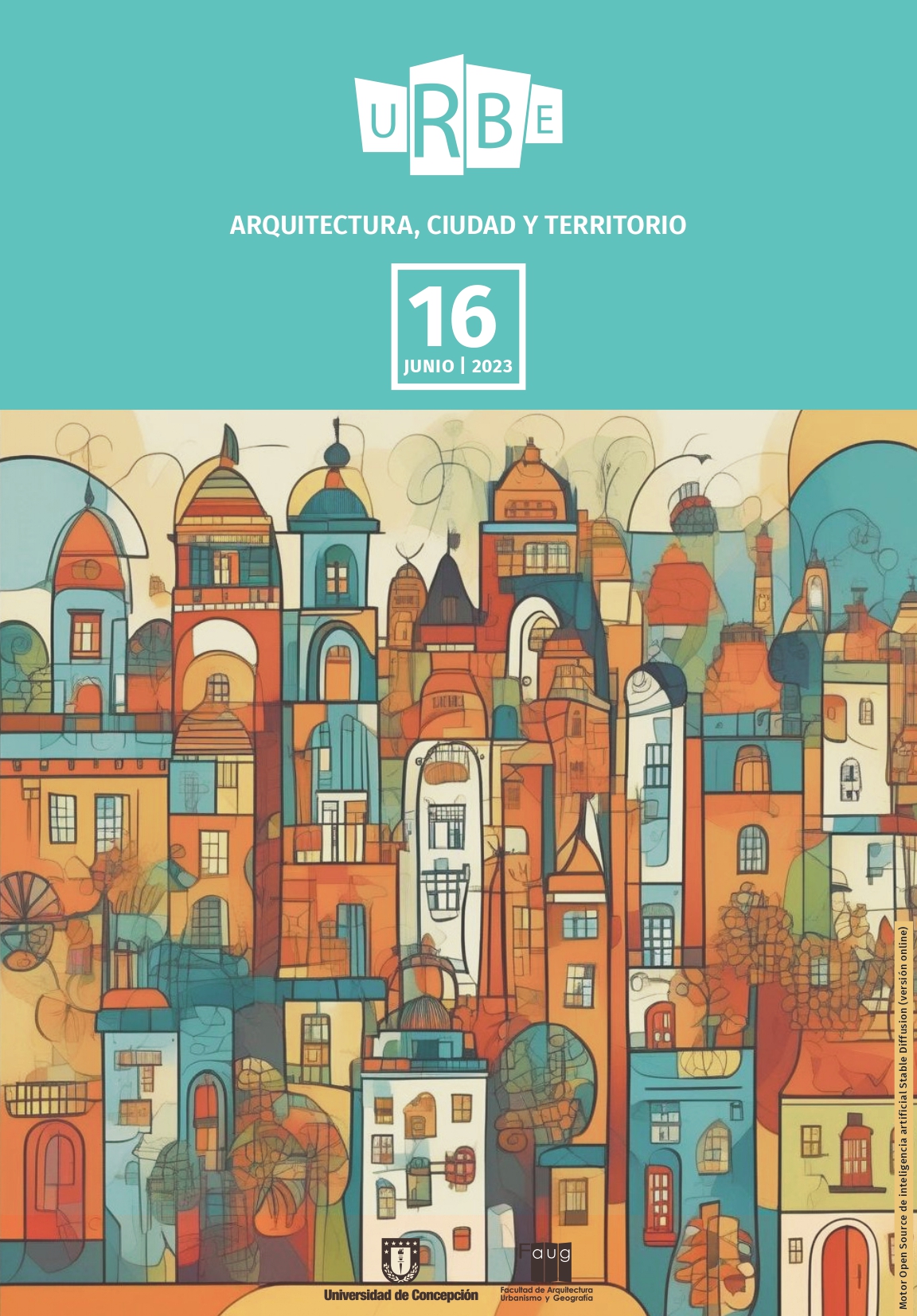Analysis of use and appropriation of tsunami mitigation parks: Case studies of mitigation parks in Tomé and Cobquecura municipalities
DOI:
https://doi.org/10.29393/UR16-5AUCC10005Keywords:
Espacio público, reconstrucción, bordesAbstract
This article analyzes the use and citizen appropriation of tsunami mitigation parks built after the 2010 earthquake, according to the status of public space conferred on this type of infrastructure. The extent to which effective use and appropriation of these occurred over time and in relation to the urban environments in which they were located is evaluated. The objective is to understand what factors facilitated or prevented the successful achievement of this double condition intended for these infrastructures as elements of mitigation and recreation at the same time, inserted in the middle of cultural and social dynamics, typical of the coastal settlements of the southern part of the Chile. The analysis is based on the results obtained from an investigation carried out on two mitigation parks built in the municipalities of Tomé and Cobquecura respectively and implemented under the Coastal Edge Reconstruction Plans. These evaluated how the relationship with the nearby urban context was configured and what were the dynamics of use and appropriation established by citizens/public/inhabitants in relation to these infrastructures. The methodology used was mixed in nature, based on two categories of analysis: integration with the environment; use and appropriation of space. And the main techniques used were: field observation; frequency of use analysis; and semi-structured interviews with relevant actors and users.
The article concludes that design elements such as size, edges and accessibility directly influence the use of the park, while generating flexible mitigation spaces, a variety of activities, some pre-existing and memory elements allow people to take ownership of the park. space. On the contrary, when mitigation measures have not worked in its design, a desolate and cold space is generated.
Downloads
References
Campos Romero, M. L. (2006). Los desastres naturales y el riesgo de Tsunamis. El Tsunami de Indonesia del 26 de diciembre de 2004.
Cártes, I. (2010). Plan maestro de reconstrucción de Dichato: Del sitio cero a las plataformas de futuro. La experiencia del PRBC 18 en la reconstrucción de la región del Biobío. Arquitecturas Del Sur, 38-51.
Contreras, Manuel, & Winckler, Patricio. (2013). Pérdidas de vidas, viviendas, infraestructura y embarcaciones por el tsunami del 27 de Febrero de 2010 en la costa central de Chile. Obras y proyectos, (14), 6-19.
Edward, J. K., Terazaki, M., & Yamaguchi, M. (2006). The impact of tsunami in coastal areas: Coastal protection and disaster prevention measures-Experiences from Japanese coasts.
Gehl, J. (2006). La humanización del espacio urbano: la vida social entre los edificios (Vol. 9). Reverté.
Giraud, L., & Rinaldi, A. (2014). Diseño Urbano y Gestión de Riesgo. Medidas de Mitigación y Prevención para el caso de Tsunamis. Provincia, (32), 43-70.
La dimensión humana en el espacio público. (2017). Recomendaciones para el análisis y el diseño. Serie espacios públicos urbanos. (2017). Recuperado de: https://issuu.com/gehlarchitects/docs/20170922_minvu_la_dimension_humana
Páramo, P., & Burbano, A. M. (2010). Calidad de vida urbana en Bogotá: satisfacción con el diseño espacial. Páramo, P. y García, M.(comps.). La dimensión social del espacio público: aportes para la calidad de vida urbana. Bogotá: Ediciones Universidad Pedagógica Nacional y Universidad Santo Tomás.
Páramo P., & Burbano, A. (2011). Género y espacialidad: análisis de factores que condicionan la equidad en el espacio público urbano. Universitas Psychologica, 10 (1), 61-70.
Páramo, P., & Burbano, A. (2013). Valoración de las condiciones que hacen habitable el espacio público en Colombia. Territorios, (28), 187-206.
Páramo, P., & Burbano, A. M. (2014). Los usos y la apropiación del espacio público para el fortalecimiento de la democracia. Revista de Arquitectura, 16 (2014); 6-15.
Minvu. (2010). Plan de Reconstrucción del Borde Costero, comuna de Cobquecura.
Minvu. (2010). Plan de Reconstrucción del Borde Costero, comuna de Dichato.
Pinilla Suárez, Juan. (2013). Antecedentes sobre el uso de barreras vegetales en el borde costero. Documento Divulgatorio N°38 INFOR.
Rodríguez, R., & Gajardo, P. (2011). Rol de los bosques en la protección del borde costero contra los efectos de tsunamis. CONAF. Concepción.
Salazar, J. (2010). Uso y apropiación de los espacios públicos. Universidad Nacional de Colombia, Facultad de Arquitectura, Sede Medellín.
Tanaka, N., Jinadasa, K. B. S. N., Mowjood, M. I. M., & Fasly, M. S. M. (2011). Coastal vegetation planting projects for tsunami disaster mitigation: effectiveness evaluation of new establishments. Landscape and ecological engineering, 7(1), 127-135.
UNISDR, E. I. (2009). Terminología sobre reducción del riesgo de desastres. Ginebra, Suiza.
Vidal, T., & Pol, E. (2005). La apropiación del espacio: una propuesta teórica para comprender la vinculación entre las personas y los lugares. Anuario de psicología/The UB Journal of psychology, 281-298.
Published
How to Cite
Issue
Section
Copyright (c) 2024 Claudia Cerda Inostroza

This work is licensed under a Creative Commons Attribution 4.0 International License.
Revista URBE. Arquitectura, Ciudad y Territorio tiene licencia de Creative Commons Attribution 4.0 International (CC BY 4.0) y debe citarse correctamente.









